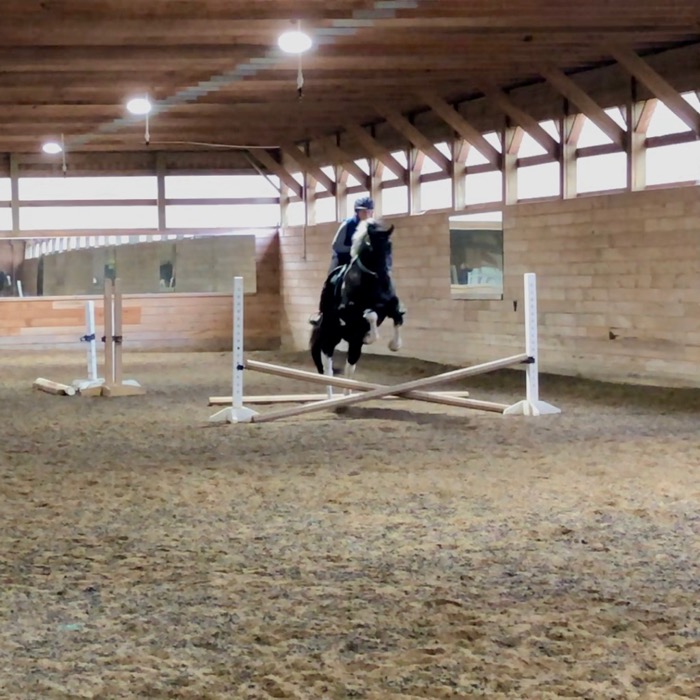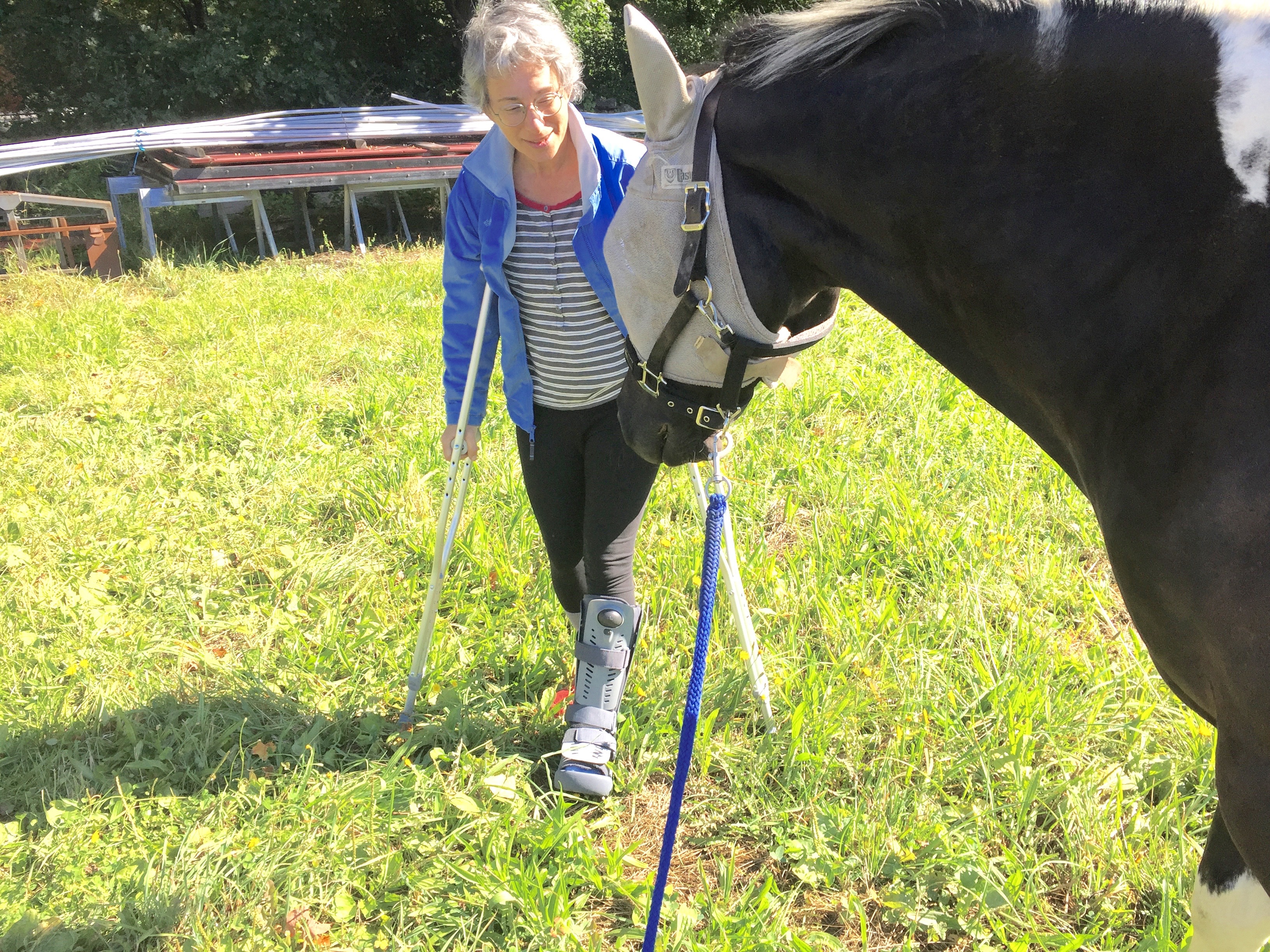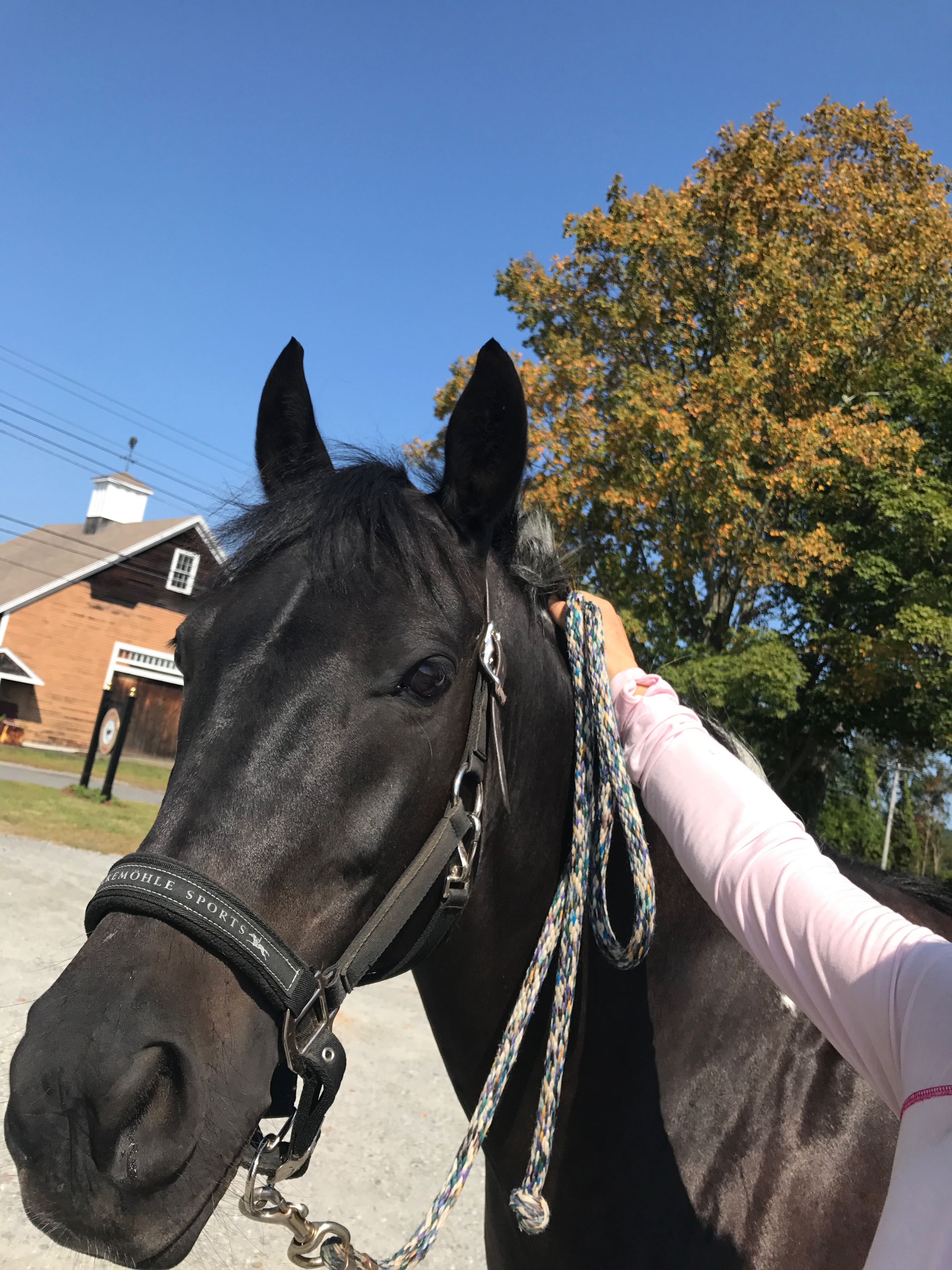Your horse has a reason for everything that they do. I have a good story about this.
After six years of riding Tonka on the flat, I’ve decided that jumping little cross-rails might be fun. Tonka agreed. During the first lesson he was a bit of an over-achiever!

Although I’m well-balanced in the saddle and know how to jump, it’s been ages (honestly, the 1980s!) since I’ve purposely ridden a horse over fences. To make sure that I didn’t inadvertently yank on the reins, my instructor, Steph, suggested that I set my hands on Tonka’s neck as I ride up to the jump. That didn’t go as expected. Tonka stopped!
So we went back to having me ride as I had been, and Tonka once again happily went over the fences.
I mulled over Tonka’s behavior. Why would he stop in his tracks like that? Then I remembered. I’d taught him to.
A few years ago, a horse (not Tonka) stepped on my foot and broke it. I was in bulky walking cast and in some pain.

I taught Tonka to be my crutch. I’d leave the crutches in the barn, and take him out to a field to graze, and he’d support me. I held on with one hand and when I needed him to slow or stop, I’d press on his crest. I taught this as a distinct and responsive behavior. He was patient and careful with me for the two months while I healed.

That was three years ago. In our recent lesson, Tonka must have been quite confused when I pressed on his mane in the same way, but from his back and while heading over a jump. Tonka did what he thought was right. He stopped. As he’d been taught.
Before my next lesson, I discussed my horse’s behavior with Steph, and we figured out how to explain to Tonka that when I press on his neck approaching a jump, that this tactile cue is not the same as the one when my foot is in a cast and I’m walking next to him.
First I trotted around the ring while in a jumping position. Then I put my hand gently on his neck and we kept going. Then I increased the weight pressing on him.
Next, I did the same thing trotting over a pole.
Then we did it at the canter.
Then we were ready to try a cross-rail.
With that in place, Steph was able to continue on with the lesson as she had planned. We can now do a cross-rail (happily, but not over-jumping) and then continue on to a pole.
So, instead of having to push and punish a horse for stopping, we got to the root cause of the behavior, explained what we wanted and made a lot of progress. Many steps in a very short amount of time.
Tonka is having a blast. So am I.

I’m sure that if you think through your horse’s behavior, you have equally interesting stories to tell. Do so in the comments!


Depending on barn and the specific history of a lesson horse, I have had some amusing ones. For instance, normally I think of a deep seat as more of a driving seat, but now take lessons from a trainer where a light seat or two point is a cue to speed up, and a deep seat is used to collect and normally slow the horse. One horse had been taught to change leads from rein cues that were similar to how I have learned to soften. Add to that the fact that I haven’t been riding that long and keeping soft hands is a struggle, and initially he kept swapping into counter canter and got a bit upset with me. You and Tonka look great jumping, and it’s cool to see you with that saddle over jumps!
It’s like trying to be bilingual. Probably easier for you than someone like me who has been using the same “language” for 50 years. That dressage saddle has moveable blocks, so I can shorten the stirrups and get my knees in the right place. At least for these tiny jumps. If we go bigger than 18 inches, I’ll have to rethink it.
Looks like you two are having a ball! And listening to each other – and thinking. What a great relationship.
We are having a blast.
Keeps our brain active trying to stay one step ahead of those guys.